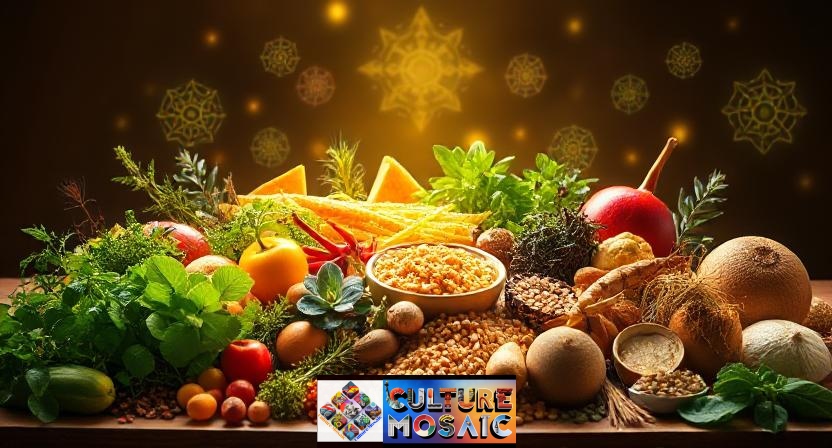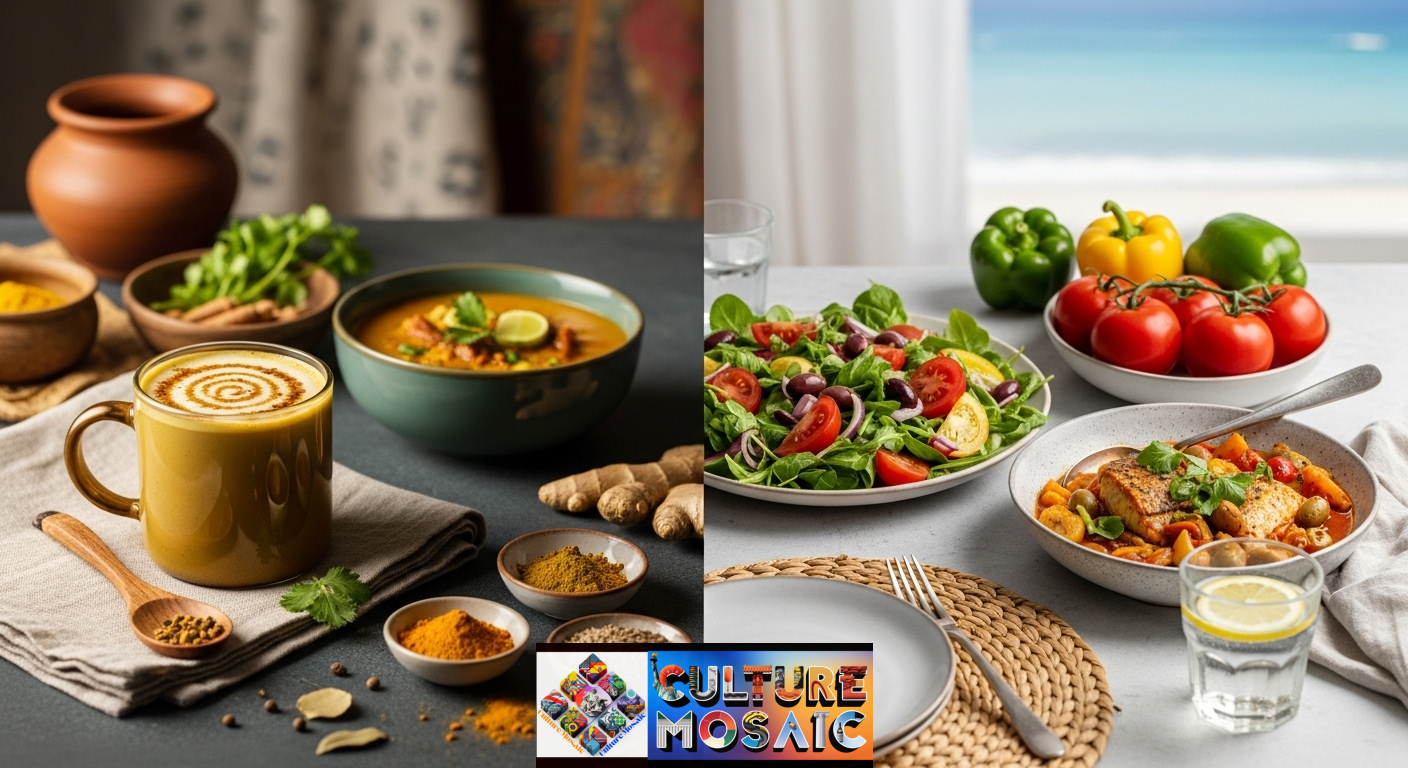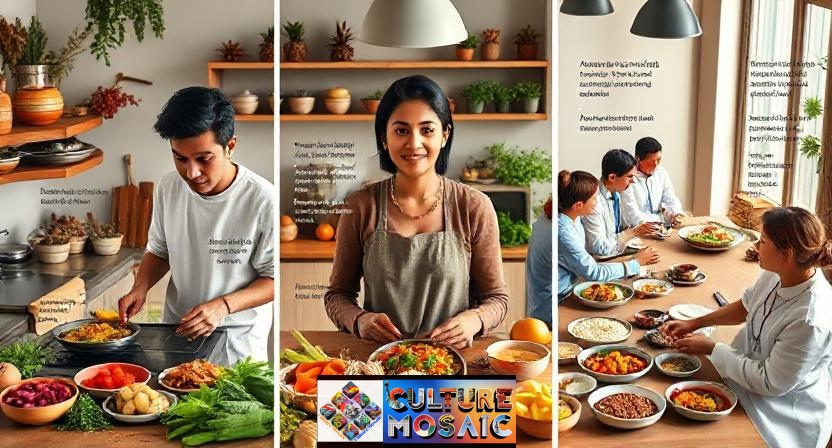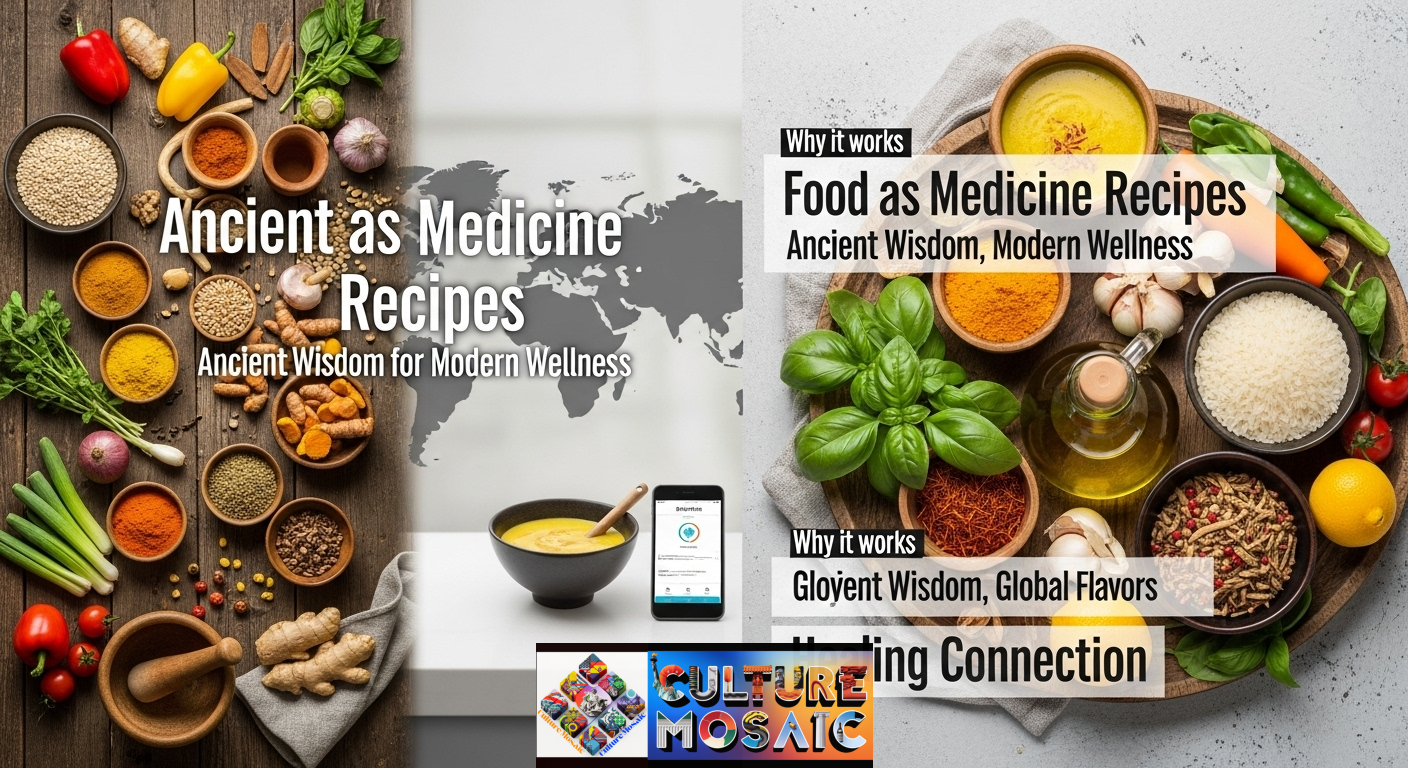In an era where chronic diseases are on the rise, the ancient concept of “let food be thy medicine” has never been more relevant. Food as medicine recipes represent a powerful intersection between culinary tradition and therapeutic healing, offering natural solutions that have sustained civilizations for thousands of years.
The Philosophy Behind Food as Medicine

Traditional healing systems worldwide recognize that food as medicine recipes go beyond basic nutrition. These time-tested approaches view each ingredient as a potential therapeutic agent, capable of preventing illness, supporting recovery, and maintaining optimal health. Unlike modern medicine’s focus on isolated compounds, these systems embrace the synergistic power of whole foods working in harmony.
Ayurvedic Food as Medicine Recipes

Ayurveda, India’s 5,000-year-old healing system, offers some of the most sophisticated food as medicine recipes. This ancient practice categorizes foods by their energetic properties—heating or cooling, heavy or light, dry or oily—and prescribes specific combinations based on individual constitution (dosha).
Golden Milk (Turmeric Latte)
This beloved Ayurvedic remedy combines turmeric’s anti-inflammatory curcumin with warming spices:
- 1 cup plant milk
- 1 tsp turmeric powder
- 1/2 tsp ginger powder
- Pinch of black pepper
- 1/2 tsp cinnamon
- Raw honey to taste
Simmer ingredients for 5 minutes, strain, and enjoy before bed for better sleep and reduced inflammation.
Kitchari (Healing Stew)
This complete protein dish serves as both food and medicine, particularly during illness or detox:
- 1/2 cup basmati rice
- 1/2 cup yellow mung dal
- 1 tsp ghee
- 1/2 tsp turmeric
- 1 tsp cumin seeds
- Fresh ginger and vegetables
Cook until creamy, seasoning with digestive spices for optimal gut health.
Mediterranean Food as Medicine Recipes
The Mediterranean approach to food as medicine recipes emphasizes fresh, seasonal ingredients rich in antioxidants and healthy fats. This dietary pattern has been extensively studied and linked to reduced inflammation, heart disease, and cognitive decline.
Anti-Inflammatory Mediterranean Salad
This nutrient-dense combination targets chronic inflammation:
- Mixed leafy greens
- Cherry tomatoes
- Cucumber
- Red onion
- Kalamata olives
- Feta cheese
- Extra virgin olive oil
- Lemon juice
- Fresh herbs (oregano, basil)
The polyphenols in olive oil and herbs work synergistically to combat oxidative stress.
Immune-Boosting Fish Stew
Rich in omega-3 fatty acids and antioxidants:
- Wild-caught fish
- Tomatoes
- Garlic
- Onions
- Bell peppers
- Saffron
- Fresh herbs
This combination provides anti-inflammatory compounds while supporting cardiovascular and brain health.
Comparing Cultural Approaches

While both Ayurveda and Mediterranean traditions utilize food as medicine recipes, their philosophies differ significantly. Ayurveda emphasizes individualization based on constitutional type and current imbalances, prescribing specific food combinations for each person’s unique needs. The system considers not just what to eat, but when, how, and in what combinations.
Mediterranean food as medicine recipes, conversely, focus on population-wide benefits through consistent consumption of specific food groups. This approach emphasizes seasonal eating, minimal processing, and the social aspects of shared meals as contributing factors to health.
Traditional Chinese Medicine offers another perspective, viewing food as medicine recipes through the lens of balancing opposing forces (yin and yang) and supporting organ systems through taste and temperature properties.
Expert Insights on Traditional Medicinal Foods
Dr. Sarah Chen, a licensed herbalist and nutritionist specializing in traditional medicinal foods, explains: “The beauty of food as medicine recipes lies in their accessibility and safety. Unlike pharmaceutical interventions, these traditional approaches work gently with the body’s natural healing mechanisms.”
She emphasizes that effective food as medicine recipes often combine multiple therapeutic mechanisms: “Take a simple ginger tea—it’s simultaneously anti-inflammatory, digestive, and circulatory stimulating. This multi-target approach often makes food remedies more effective than single-compound treatments.”
Dr. Chen also notes the importance of preparation methods in traditional food as medicine recipes: “How we prepare foods—whether we ferment, sprout, cook, or consume them raw—dramatically affects their therapeutic properties. Traditional cultures understood these nuances intuitively.”
Practical Applications for Modern Life
Incorporating food as medicine recipes into contemporary lifestyles requires adapting ancient wisdom to modern constraints. Start by identifying common health concerns and researching traditional remedies from various cultures. For example, digestive issues might benefit from Ayurvedic spice blends, while inflammatory conditions could respond well to Mediterranean-style anti-inflammatory foods.
Seasonal eating represents another key principle across traditional food as medicine recipes. Spring detox foods like dandelion greens and nettle tea support liver function, while warming winter foods like bone broths and root vegetables provide sustained energy during colder months.
The Science Behind Ancient Wisdom
Modern research increasingly validates traditional food as medicine recipes. Studies on turmeric confirm its anti-inflammatory properties, while research on Mediterranean diets demonstrates their cardiovascular benefits. This scientific backing helps bridge the gap between ancient wisdom and contemporary healthcare.
However, it’s important to remember that food as medicine recipes work best as part of a holistic lifestyle approach. Regular physical activity, stress management, adequate sleep, and strong social connections all contribute to the effectiveness of therapeutic foods.
Creating Your Own Food as Medicine Recipes
Developing personalized food as medicine recipes begins with understanding your individual needs and preferences. Consider your health goals, seasonal availability of ingredients, and cultural background when selecting therapeutic foods.
Start simple with single-ingredient remedies like ginger tea for nausea or chamomile for relaxation. Gradually incorporate more complex combinations as you become familiar with how different foods affect your body. Keep a food and symptom journal to track which food as medicine recipes work best for your unique constitution.
Conclusion
Food as medicine recipes represent humanity’s oldest and most accessible form of healthcare. By combining the wisdom of traditional healing systems like Ayurveda and Mediterranean dietary practices with modern nutritional science, we can harness food’s therapeutic power for optimal health and vitality.
Whether you’re drawn to Ayurveda’s personalized approach or the Mediterranean’s emphasis on fresh, seasonal foods, incorporating these time-tested food as medicine recipes into your daily routine offers a natural, sustainable path to wellness. Remember, the most effective medicine might just be sitting in your kitchen pantry, waiting to be transformed into healing nourishment for body and soul.
FAQs
Q: What are food as medicine recipes, and how do they work?
A: Food as medicine recipes are therapeutic culinary preparations that use whole foods, herbs, and spices to prevent illness and support healing. They work by providing concentrated nutrients, antioxidants, and bioactive compounds that support the body’s natural healing mechanisms, unlike isolated pharmaceutical compounds.
Q: Are Ayurvedic food as medicine recipes safe for everyone?
A: While generally safe, Ayurvedic food as medicine recipes should be chosen based on individual constitution (dosha) and current health conditions. Pregnant women, those with chronic conditions, or people taking medications should consult healthcare providers before using therapeutic foods as primary treatments.
Q: How long does it take to see results from food as medicine recipes?
A: Results vary depending on the condition and consistency of use. Some recipes like ginger tea for nausea provide immediate relief, while others for chronic conditions may require 4-6 weeks of regular consumption. Consistency and proper preparation are key to effectiveness.
Q: Can I combine Mediterranean and Ayurvedic food as medicine recipes?
A: Yes, many principles complement each other beautifully. Both emphasize whole foods, seasonal eating, and therapeutic spices. However, pay attention to how combinations affect your digestion and energy levels, as some food combinations may not suit everyone.
Q: Where can I find authentic ingredients for traditional food as medicine recipes?
A: Many ingredients are available in regular grocery stores (turmeric, ginger, olive oil). Specialty items can be found at health food stores, ethnic markets, or online retailers. Start with basic recipes using common ingredients before investing in specialized herbs and spices.

